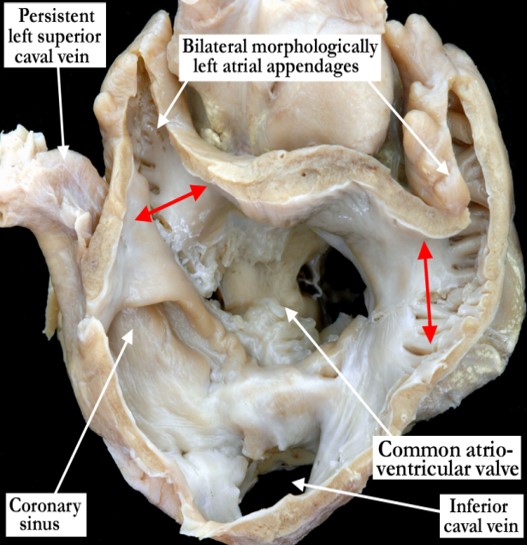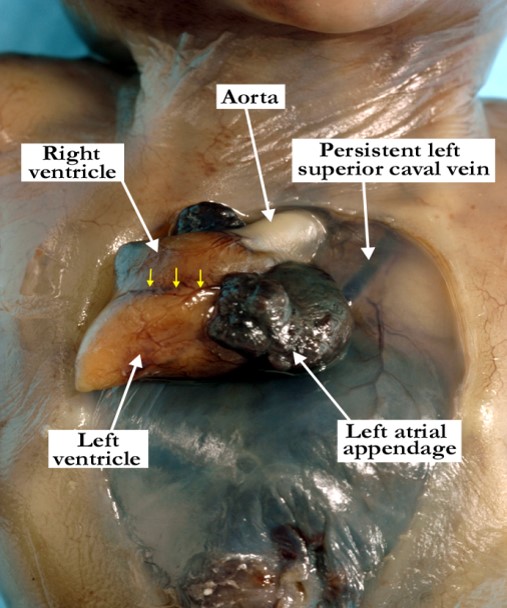01.03.03 Isomerism of left atrial appendages
IPCCC Term ISOMERISM OF LEFT ATRIAL APPENDAGES
IPCCC Code 01.03.03
ICD-11 Code PENDING
Synonyms PENDING
Abbreviations PENDING
IPCCC Definition A congenital cardiac malformation in which both atrial appendages have the morphology of a left atrial appendage.
[restabs alignment=”osc-tabs-right” pills=”nav-pills” responsive=”true” icon=”true” text=”More”][restab title=”Anatomic Specimen” active=”active”]
 |
This view of the base of the heart demonstrates bilateral morphologically left atrial appendages. The pectinate muscles are confined within the tubular appendages bilaterally and both have a narrow junction (double headed red arrows) with the body of the atriums. The vestibules are smooth circumferentially to the crux on both sides. Note the common atrioventricular junction and the persistent left superior caval vein draining to the coronary sinus. |
[/restab][restab title=”Echocardiogram”]Content for Echocardiogram[/restab][restab title=”Computerized Axial Tomography”]Content for Computerized Axial Tomography[/restab][restab title=”MRI”]MRI[/restab][restab title=”Angiography”]Content for Angiography[/restab][restab title=”Intraoperative Videos”]Content for Intraoperative Videos[/restab][restab title=”Other”]Other[/restab][/restabs]

